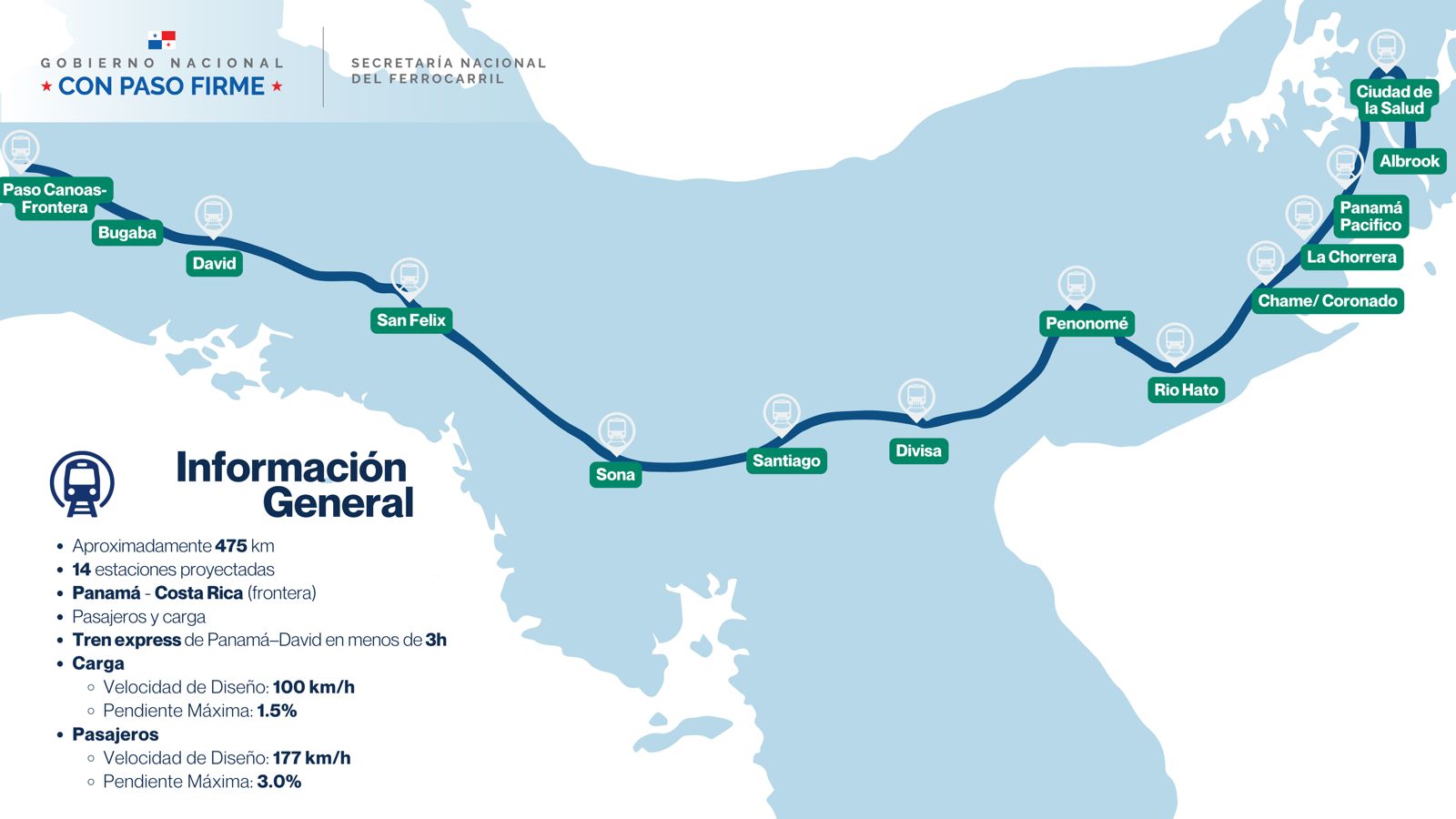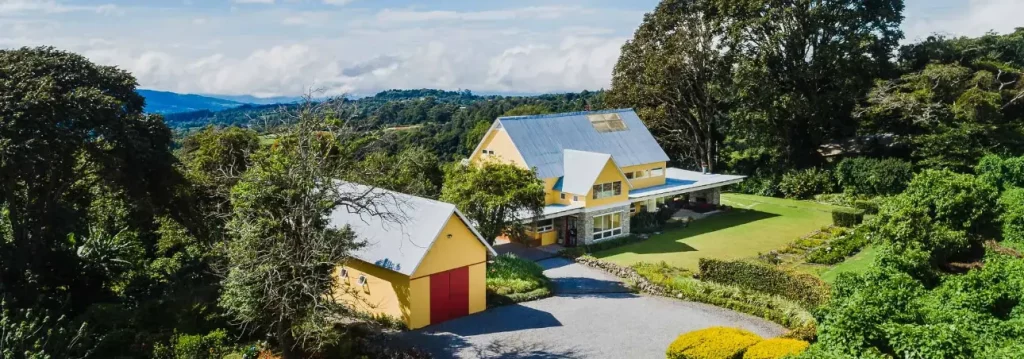
President José Raúl Mulino has officially announced the full route of the highly anticipated Panama-David railway line — a project many see as one of the most significant infrastructure undertakings in Panama’s modern history.
The 475 km train line will stretch from Panamá Pacífico to the border town of Paso Canoas, passing through 14 strategic locations including Albrook, La Chorrera, Coronado, Río Hato, Penonomé, Divisa, Santiago, Soná, San Félix, David, Bugaba, and others. The goal: connect Panama City to David in three hours or less.
For perspective, this would cut the travel time by more than half compared to the current drive. The express route is expected to reach speeds of 180 km/h for passenger trains, with cargo trains running at up to 100 km/h.
Mulino described the train as a legacy project — one that he says represents the momentum and work ethic of the country. It’s also expected to generate more than 50,000 jobs during its construction phase.
What This Could Mean for Property Buyers and Investors
For those considering a move or investment in Panama, this project could shift the map in a meaningful way. It enhances accessibility to areas that were previously less connected to Panama City, while boosting already attractive markets.
Take Coronado, for example. As one of the most established beach communities in Panama West, Coronado already attracts many full-time residents and weekenders from the capital. With a future train station planned nearby, we may see an uptick in long-term residential demand as commuting becomes more viable — not only for retirees and expats but for professionals and entrepreneurs seeking a more relaxed lifestyle outside the city.
Farther west, David stands to gain significantly. As Chiriquí’s economic and logistical heart, the addition of a train connection enhances its role as a hub for business, travel, and services. It’s easy to imagine growing interest in the surrounding residential areas — not just from locals, but also from international buyers and businesses.
A New Layer of Infrastructure and National Integration
The initial phase of construction — from Panamá Pacífico to Divisa — is expected to begin in 2026, once all technical and institutional processes are complete. This section alone will span 110 km and includes the construction of a new railway bridge over the Panama Canal. The train will also connect with Metro Line 3 in Panamá Pacífico.
Officials emphasized the project’s potential to integrate various modes of transport — metro lines, ports, highways, airports — creating a multi-modal system that lowers logistics costs and opens up new corridors for commerce and development.
The planning was guided by global benchmarks, with references to systems in Germany and South Korea, focusing on efficiency, integration, and long-term scalability. Each station was selected based on population density, economic activity, tourism potential, and intermodal connections.
President Mulino also highlighted a separate but related development — a B/.200 million investment in Santa Fe by a group of Chiriquí-based business leaders — as an example of how private capital is already beginning to align with the vision of regional expansion.
Real Estate Impact: What to Watch For
Real Estate Impact: What to Watch For
This train line could gradually reshape how people live, work, and invest across the country. Communities that were once considered weekend retreats, like Coronado, may begin to see more permanent year-round residency. Areas like Santiago, Divisa, and Soná — long overlooked by international buyers — could gain new visibility and traction in the market.
In David, and nearby towns like Bugaba, the railway will likely boost both residential and commercial activity. This may eventually support new inventory, more services, and higher buyer interest — especially from those who want the advantages of a city while still enjoying the feel of a more relaxed province. Likewise, Boquete, already a favorite among expats and retirees, could benefit from its proximity to the David station. Improved access could enhance Boquete’s appeal even further, particularly for those looking to balance a tranquil mountain lifestyle with the convenience of quick travel to Panama City or the border.
As with all infrastructure projects, the effects will play out gradually. But the direction is clear: this project has the potential to open up new possibilities for those looking to invest outside of the capital.
Curious about how this project might influence the property you’re interested in — or help you find the right area to buy in Panama?
Let’s talk. At Casa Solution, we’ve helped hundreds of buyers navigate Panama’s changing landscape and find exceptional properties in areas like David and Coronado.
We’d be happy to help you too.
Date: May 10, 2025



